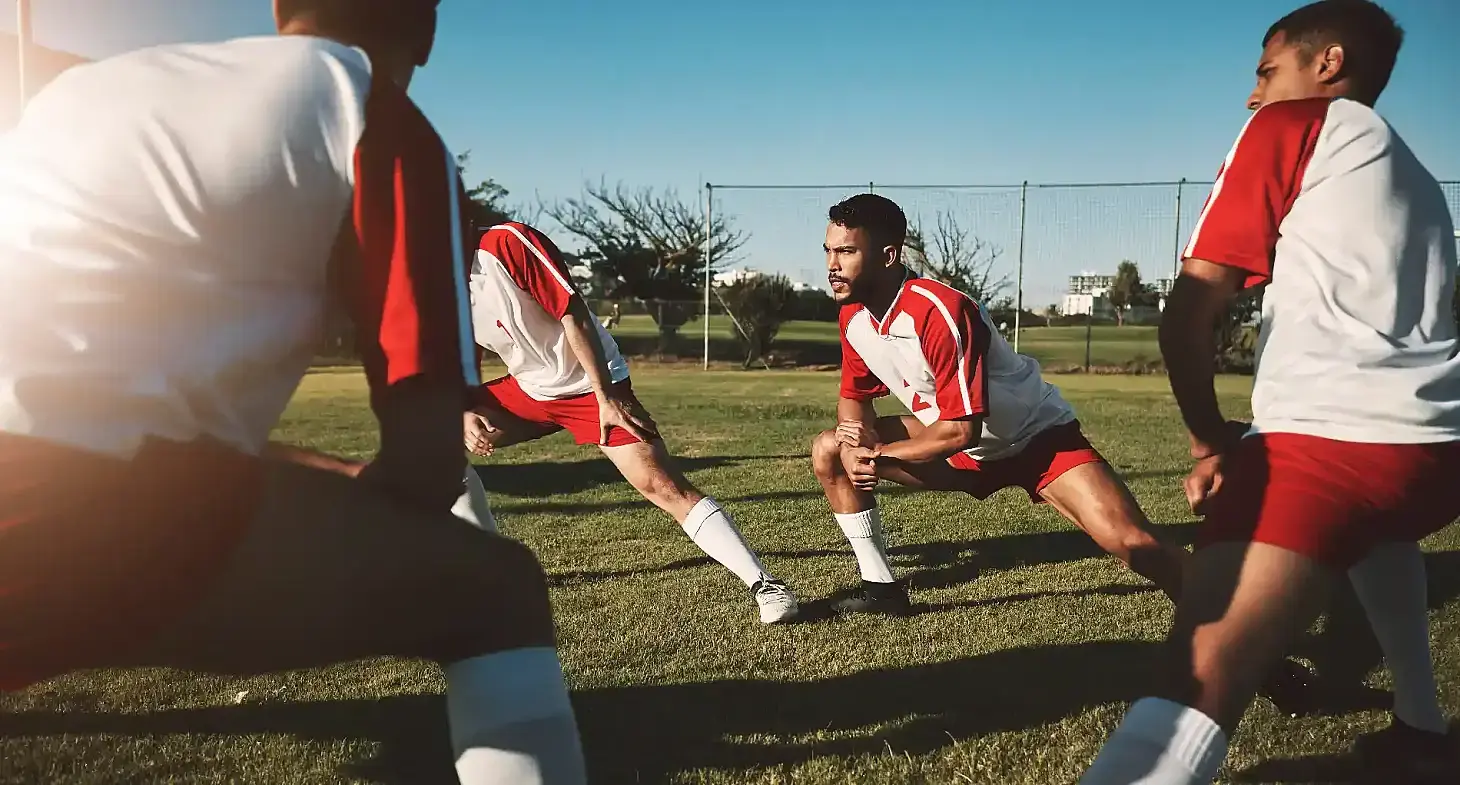Re-Warm-Up in Football
A football match lasts 90 minutes, divided into two 45-minute halves. Sometimes, the halftime break is a welcome relief—especially when you’re under relentless pressure from the opposition. "Just two more minutes, then we can finally breathe!" Other times, the break is frustrating—right when your team is dominating and dismantling the opponent’s defense. "Damn, halftime already?" And sometimes, the game is just dragging on, and even the spectators eagerly await the halftime whistle.
There has always been a lot of discussion about halftime—15 minutes filled with tactics, psychology, and passionate speeches. But what about the body?
As is often the case, when something is overlooked, it presents an opportunity for those who take the time to explore it. That’s exactly what we’ll do today.
What Happens to the Body at Halftime?
A recent study by Yanaoka et al. (2018) examined the effects of a 15-minute rest period using three different scenarios. Note: The study was conducted on a cycling ergometer, so it is not fully transferable to football. However, the findings are still highly relevant.
Study Setup:
Eleven male participants performed high-intensity interval training in two "halves":
- First half: 20 sets of 2-minute intervals, alternating:
- 10 seconds at 130% VO₂ max
- 70 seconds at 60% VO₂ max
- 25 seconds slowing down
- 15 seconds rest
- Second half:
- 10-second sprints
- 10 seconds at 50% effort
- 10 seconds rest (repeated 10 times)
The Halftime Experiment:
During the 15-minute break, the researchers tested three recovery methods:
- Complete passive rest for 15 minutes (the typical halftime scenario)
- 11 minutes rest + 3 minutes cycling at 60% VO₂ max
- 11 minutes rest + 3 minutes cycling at 30% VO₂ max
The results? Both active recovery methods (options 2 and 3) led to higher performance levels in the second half compared to complete rest. Oxygen consumption was also higher, and in the more intense cycling group (60%), muscle temperature remained elevated.
The researchers concluded that performance increased due to the higher oxygen consumption. The active recovery phases were not physically demanding—they simply kept the players moving. In short:
"Doing something is always better than doing nothing."
How to Secure Your Second Half in Just 3 Minutes
One of the most striking findings was that the Re-Warm-Up only lasted three minutes. A common criticism of re-warm-ups is the time factor, but this study proves that three minutes is enough to maintain performance.
For football, this means:
Coming out of the locker room a bit earlier and performing a short re-warm-up could be a game-changing advantage!
Another common misconception is that re-warm-ups are too exhausting and could lead to fatigue later in the game. However, Edholm’s 2014 study disproved this. It makes sense—a few minutes of light movement should not negatively impact a player’s performance. Understanding these physiological effects can be a huge asset in football.
Additional Tips: Staying Warm Before the Re-Warm-Up
Even before the re-warm-up, there are ways to prevent cooling down.
Using blankets or compression clothing during halftime can help maintain muscle temperature and core body heat. Although this factor was not explicitly examined in Yanaoka’s study, it is highly likely that staying warm contributes to better second-half performance.
Why Carbohydrate Drinks Don’t Work After 45 Minutes
Many players rely on energy drinks, cola, or carbohydrate-rich sports drinks to keep their energy levels high throughout the game. The theory is that additional sugar in the bloodstream will prevent performance decline over 90 minutes.
But is this really the case?
A 2014 study by Russell examined how carbohydrate intake affects blood sugar levels throughout a match. The researchers confirmed that blood sugar levels increased before halftime—but there was no positive effect after halftime.
Why?
For the body, halftime = recovery. The body doesn’t know it has to start another intense 45 minutes. It assumes the game is over and starts the recovery process.
- Cortisol levels drop (less stress = less energy mobilization)
- Insulin levels rise, causing glucose to be stored as glycogen in the liver and muscles
- This lowers blood sugar levels—exactly the opposite of what players want
A possible solution? Combining Re-Warm-Up with carbohydrate intake. While there are no studies on this yet, it theoretically makes sense: If the body is still in “active mode” through movement, the hormonal shift might not happen. This could allow sports drinks to remain effective in the second half.
Optimizing Halftime for Victory
A physiologically optimal halftime break would look like this:
- 5–10 minutes of team discussion & strategy adjustments
- Keeping muscles warm with blankets or compression gear
- 3–4 minutes of Re-Warm-Up
Suggested Re-Warm-Up Routine:
✅ 1–2 dynamic mobility exercises (e.g., World’s Greatest Stretch, Warrior Pose)
✅ A few runs with high knees, skips, and heel kicks
Final Thoughts
As you can see, halftime can be optimized even without access to high-tech equipment or an advanced coaching team.
Try implementing a Re-Warm-Up in your next match and see how players respond.
It just might be the key to dominating the second half!

